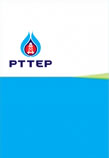Biodiversity and Ecosystem Services Management
Strategy and Targets for Biodiversity and Ecosystem Services
PTTEP has committed to operating with minimal environmental impacts and integrated the impacts on biodiversity and ecosystem services into the business decision-making process, by means of the promotion of the net positive impact on biodiversity and ecosystem services at all operational areas. To achieve the objective, PTTEP has set the targets endorsed by the Executive Management and Board of Directors as outlined below:
- Avoid operating in World Heritage sites as defined by UNESCO.
- Achieve No-Net Loss of biodiversity in protected areas as defined by the International Union for Conservation of Nature (IUCN) Category I-IV protected areas by 2044.
- Achieve Net Positive Impact of Ocean Biodiversity and Ecosystem Services (Ocean BES) value in domestic offshore operations by 2025 and all offshore operations by 2030, compared to the 2019 base year.
- No Gross Deforestation* for E&P from 2021 onwards.
*The Food and Agriculture Organization (FAO) defines a forest as natural forests and forest plantations that have tree canopy covers more than 10 percent and areas of more than 0.5 hectare. The trees should be a minimum height of 5 meters. Forests are determined both by the presence of trees and the absence of other predominant land uses.
The Company requires third parties such as tier 1 suppliers, non-tier 1 suppliers, and partners to commit to all Biodiversity and Ecosystem Services targets for all operations under PTTEP boundary.
To ensure effective achievement on the targets, PTTEP developed the Biodiversity and Ecosystem Services (BES) Management Guideline in line with IPIECA's "A Guide to Developing Biodiversity Action Plans for the Oil and Gas Sector" and International Finance Corporation (IFC)'s Performance Standard 6: Biodiversity Conservation and Sustainable Management of Living Natural Resources. The management guideline has been implemented at all PTTEP operational sites since 2014, according to the following mitigation hierarchy:
- Conduct biodiversity and ecosystem system service risk assessment in different project phases.
- Develop Biodiversity Action Plan where there are high risks.
- Implement Biodiversity Action Plan.
- Monitor environmental impacts concerning biodiversity and ecosystem services.
- Develop Biodiversity Offset Management Plan, where there is a residual impact, to compensate potential loss of biodiversity values in order to achieve no-net loss.
Furthermore, PTTEP collaborates with external organizations on Biodiversity and Ecosystem Services such as;
- IPIECA-IOGP Biodiversity and Ecosystem Services Working Group (BESWG) and UN Environment Programme World Conservation Monitoring Centre (UNEP-WCMC) since 2016. The collaborations are in terms of e.g. sharing best practices, providing input on relevant legislation and regulations, supporting initiatives that drive positive change, capacity building/training and stakeholder engagement to promote biodiversity conservation and ecosystem services.
- Department of Marine and Coastal Resources, under the Memorandum of Understanding (MoU) of Ocean for Life for 10-year cooperation (2020-2030) to promote and restore marine resources and biodiversity for ocean sustainability, enhance the quality of life and generate income for local communities in 17 provinces around the Gulf of Thailand where PTTEP has its operations.
- Petroleum Institute of Thailand in corporation with other E&P operators in the gulf of Thailand, Department of Mineral Fuels, consent authorities for rig-to-reef project, and academic experts during 2020-2021 to study and complete a guideline on the rig-to-reef project in the gulf of Thailand.
- Kasetsart University, under the Memorandum of Understanding (MoU) for 3-year collaboration (2020-2023) to promote ocean sustainability through various initiatives to tackle national and global issues with focus on ocean health and biodiversity monitoring.
- Department of Fisheries, Kasetsart University, Prince of Songkhla University, and Southeast Asian Fisheries Development Center, under the Memorandum of Agreement (MOA) for 3-year cooperation (2022-2025) to study and develop a guideline on the rigs-to-reef for sustainable fisheries Project, as well as promote and enhance fisheries resource management.
- Petroleum Institute of Thailand (PTIT), National Research Council of Thailand (NRCT) and National Research Council of Thailand (NRCT) signed a Memorandum of Understanding (MOU) for 5-year collaboration (2023-2028), with the cooperation from petroleum operators such as PTTEP and Chevron Thailand Exploration and Production Co., Ltd., for enhancing academic collaboration in the maritime interests to exchange knowledge and co-sponsor research assistance related to the ecosystem around decommissioning petroleum wellhead platforms in the Gulf of Thailand in order to conserve marine biodiversity.
- Office of Natural Resources and Environmental Policy and Planning under the Memorandum of Agreement (MOU) for 5-year collaboration (2023-2028) in promoting biodiversity conservation and ecosystem services, synchronizing between localized and national data platforms, and enhancing the social and environmental balance for biodiversity and support the country sustainability goal.
Biodiversity and Ecosystem Services Risk Assessment
PTTEP manages biodiversity and ecosystem service risks by integrating them into the Environmental Impact Assessment of all E&P projects as well as impose Biodiversity Action Plan at projects with a high level of biodiversity risks. The action plan is designed to prevent the loss of endangered species as well as protecting and restoring ecosystem services that might be impacted by the company's operations.
The biodiversity and ecosystem service risk management assessment, conducted in 2017 and reviewed in 2021, showed that no project possessed high biodiversity risks. Moreover, PTTEP has completed the voluntary Biodiversity Action Plan (BAP) for all operational assets that possess medium-level risks. The Company also organized workshops to enhance knowledge and understanding on biodiversity for personnel working in areas of moderate risk level.
In addition, PTTEP conducts dependency and impacted-related risks assessments for the operations located in close proximity to critical biodiversity using WWF's Water and Biodiversity Risk Filter.
The Company's BES risk assessment and its management in accordance with the mitigation hierarchy is summarized in Biodiversity and Ecosystem Services Risk Assessment & Progress Report.



 ...the sea has become our home and so we are conscious of our responsibilities...
...the sea has become our home and so we are conscious of our responsibilities...




 PTTEP is E&P company in Thailand, exploring for sustainable sources of petroleum for the countries we operate
PTTEP is E&P company in Thailand, exploring for sustainable sources of petroleum for the countries we operate
 SIGN IN
SIGN IN SEARCH
SEARCH




 Environmental Performance Data(as of 31 December 2022)
Environmental Performance Data(as of 31 December 2022)


